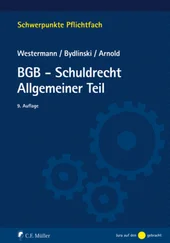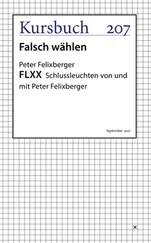Murray quickly got everyone back in line for the ascent. The sooner they were moving, the better he’d like it.
They picked up their canisters of dry foam and extra coils of rope. Murray told them to recheck the straps on their oxygen tanks.
“Unless we find out different, nothing’s changed,” he said. “We’re going back the same way we got down here, up the skip shaft to Level 15. Then up the main air shaft to the elevator cage on Level 8. Any questions?”
They started up the skip shaft. It was more difficult climbing up the steep incline than descending. What had taken nearly half an hour during the three-hundred-foot descent now ate up forty minutes of time. Tied together again, they had to lean into each step. Their leg muscles soon began to feel the strain and they had to stop once when Booker’s calves cramped up. Only Neutron had an easier time of it, carrying the large spool of non-1 fusing as it rolled up the shaft once used for the coal conveyor belt. Freed from the weight of the bomb, the robot moved effortlessly up the slope.
When they reached Level 15 Murray checked the temperature gauge. They stopped beside the three-foot-high red-painted number on the wall—15.
“Man, I don’t believe this,” he said. “It’s pushing ninety degrees. This ground’s a furnace.”
He didn’t have to tell that to Elizabeth or Atkins. Both were soaked through their heavy clothing. They all were.
They started down one of the dark, forty-foot-wide tunnels that had been carved out of the coal seam. They squeezed through a narrow space where part of the ceiling had collapsed and were approaching a crosscut that linked two of the tunnels when the ground heaved. They’d gone about four hundred feet.
The force of the tremor hurled Atkins down. He fell hard on his back, his air tank cracking against his spine. Elizabeth and Weston also fell. The ground kept moving, shaking back and forth like a vibrator. There was a deep rumble far below them, the sound of buried thunder.
“Get back! Move!” Murray was screaming at them as they scrambled to their feet.
Atkins heard the sharp crack and glanced up just as a section of the roof collapsed. A slab at least twenty feet long fell ten yards in front of them. Coal dust stung their eyes. They were coughing, spitting it up.
When the air started to clear, they made out the dimensions of the cave-in. They stood in the dusty haze, staring at a wall of broken rock that had sealed the tunnel from floor to ceiling. They’d almost been crushed.
“I noticed that weak spot coming in,” Murray said, angrily shaking his head. He was mad at himself. He should have been more cautious. They were in a hurry, but that was no excuse for carelessness. He shined his light on the ceiling, looking for other dangerous fractures. They’d moved back just in time.
“How strong do you think that was?” Elizabeth asked.
“I’d say another 5,” Atkins said.
“I don’t like the way they’re starting to bunch up,” Weston said. “The ground’s really moving.”
Atkins couldn’t have agreed more. He thought again about the huge fault that spread out twenty miles below them and how dangerously close it was to others that cut through the Mississippi Valley.
Murray laid out their only option.
“We’re going to have to blast our way through that rock,” he said. “I’ll set the charge. Everybody get back as far as you can.” They retreated down the tunnel almost to the skip shaft, nearly fifty yards.
Murray waited until everyone was out of the way. He checked his gas meter. Methane levels had climbed slightly, but still weren’t at the danger threshold. He set two sticks of plastic explosives in a shallow crevice in the rock, positioning them at the base of the rib wall. Designed to blast escape holes through blocked passageways, the shaped charges of gelatin dynamite were called “rock busters.”
The fuse cord was attached to a small blasting cap, which resembled a shotgun shell. Made of aluminum, it was crimped onto the explosives. Murray ran the cord back up the tunnel nearly to the skip shaft and crouched behind a pillar.
“Get ready!” he said. He counted down from five, then shouted, “Fire in the hole!”
He pulled a metal trigger attached to the end of the fuse cord, which provided the spark that ignited it. Within seconds the black powder core of the fuse raced to the blasting cap. The explosion went off with a ripping blast that peppered the tunnel with rock fragments.
When the dust settled, Murray shined his spotlight at the cave-in. His heart sank. The hole the explosives had blown in the rock was too small. Barely two feet high, it didn’t go all the way through.
“That’s not going to do it,” he said.
Elizabeth asked whether they could use the explosive charges that Booker had placed in the shafts on the way down.
Booker said, “They’re much too strong. They’re designed to collapse the tunnel. The whole thing would come down on us.”
Murray didn’t like the way it looked. Long cracks had opened in the ceiling. He was worried about another cave-in.
Booker had another idea. “Let’s see if Neutron can widen that hole.” Working the controls, he manipulated the robot’s steel-composite “man extender” claws so they spun like a drill. Within twenty minutes, Neutron had widened the hole enough for them to scrape through.
Booker sent the robot in first, its orange football helmet still securely strapped in place. He switched on Neutron’s powerful headlamp and television monitor and maneuvered it fifty yards down the tunnel. Beyond the cave-in, everything looked clear and open.
Pushing their air tanks and foam canisters in ahead of them, they crawled through the cramped opening.
Murray hurried them another six hundred feet to the air shaft at the end of the tunnel and immediately noticed something was wrong. He no longer felt fresh air moving in it. He shined his spotlight up the shaft. A row of green reflectors glinted in the light, extending at spaced intervals as far up as he could see.
“It looks clear,” he said. That was good news, but Murray was worried about all that falling rock he’d heard earlier. Somewhere up there, they were going to run into trouble.
They started up the air shaft, the longest leg to the elevator cage on Level 8, nearly seven hundred feet.
“How much time do we have?” Murray asked.
Booker checked his watch. “Just under two hours,” he said.
Atkins felt something turn in the pit of his stomach. They were eating up the minutes. He doubted four hours was enough time to get out of the mine.
As they crept single-file up the steep incline, Booker stopped to examine the explosive charges and fusing he’d inserted into the rock wall on the way down. Everything looked intact. As a backup, he placed more of the water gel explosives in the shaft, running a separate fuse line, which he would connect once they reached the surface. The charges were designed to explode with a delay interval of twenty-five milliseconds for maximum effect.
Murray called a halt when they reached Level 11. His gas meter had started beeping. A red light flashed. He cleared the meter and rechecked the reading.
“We’ve got a methane problem,” he said. “I’m getting concentrations of 5.4 percent, and the damn thing is still climbing.”
Atkins remembered what Murray had told them about methane danger levels. Five percent was the redline. Anything over that was bad news.
Murray announced more trouble. “The carbon monoxide levels have really popped,” he said. “They’re reading fifty parts per million .”
“What does it mean?” Weston asked.
“It means there’s a fire burning somewhere above us,” Murray said. “It could be anywhere in the mine, in one of the tunnels, up a crosscut, in one of the galleries. Anywhere. We’ve got to worry about all that methane igniting.”
Читать дальше












